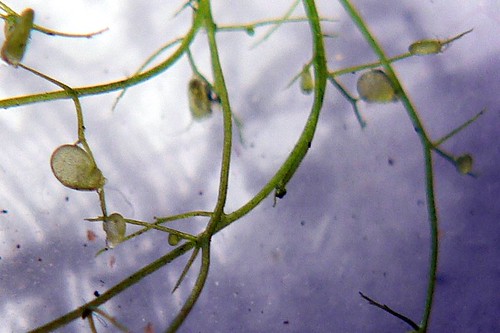I collected some Utricularia gibba ssp. exoleta--Floating Bladderwort--from a dam in Wyee on the NSW Central Coast over a year ago, and have been cultivating it in an open fish-tank in the back garden ever since. Looking at the bladders under the microscope is a wonderful experience, because they're such delicate and efficient structures. They open and draw in some of the surrounding water, then close again to digest the tiny microscopic creatures sucked in with the water. Thus, they're carnivorous plants, but very different from more famous carnivores like the Dionaea muscipula , the Venus Fly Trap.
While I was looking at some today, I found myself wishing that I had a camera attachment for my microscope, and then wondered how it would turn out just with regular macro photography. Quite well, it transpires!
The "stems" are actually stolons, the "shoots" from the stolons are modified leaves, and the bladders grow off the leaves.
To give you a sense of scale, the bladders (or traps) are only 1 to 2.5 mm long.
